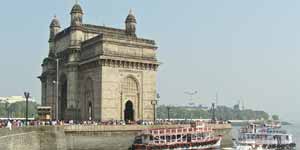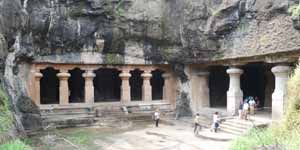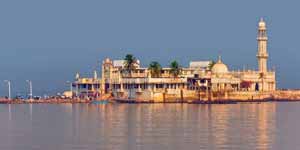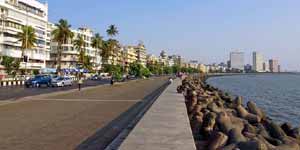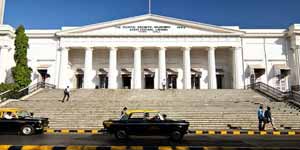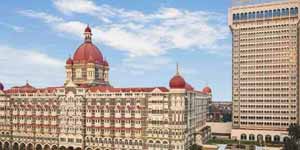
Elephanta Caves
Elephanta Caves is an island off the Mumbai (Bombay) coast. So the first point is to get to Mumbai. This is one of the most connected cities in India. A large number of daily flights are operated to Mumbai (BOM) from the rest of the main cities in India. So are the international connections to Mumbai.
Once in Mumbai head for the Gateway of India. This is an immensely prime landmark of Mumbai. It is from this point the ferries to Elephanta Island operate.Though heavily crowded during the peak hours, Mumbai has an excellent suburban local rail network.
From wherever you are in Mumbai, catch a local train to Churchgate or CST station. Both are terminal stations, so it is a bit easy to get out and get in. By the way CST (Chhatrapati Shivaji Terminus) railway station itself is a UNESCO World Heritage Site. From Churchgate or CST, one can walk to Gateway of India along the heritage lane. It’s a 20 to 30 minute walk. Or a 10 minute taxi ride.
Alternatively you can depend on the city bus or taxi to Gateway of India. Auto-rickshaws are not permitted to this side of the city.Once in Gateway of India, you are just a 60 minute away from Elephanta by the ferry.
As you approach this locality you can easily notice the imposing Gateway of India structure facing the sea. Walk towards it and on your left is the where you can board the ferry to Elephanta. In all probability by this time selling the ferry tickets for Elephanta would have approached you shouting ELEPHANTAAA!! at the top of their lungs.
Officially it is sold at the counter nearby. Rs 120 (USD 3) for a return ticket. They collect Rs10 inside the boat to sit on the upper deck. It’s worth this ‘premium’ as you can get a good panoramic view, the crowd and noise is relatively less.
Buy the ticket and ask for the direction to board the boat. If a boat is not already boarding, you may need to wait till the next boat arrives. Typically every 30 minutes a boat leaves for Elephanta. Make sure that you are boarding the Elephanta boat rather than the local sightseeing boat.
On a clear day you can see the Elephanta Island in the horizon as a thin strip from Gateway of India, most likely the haze makes it impossible to see the island which is about 11 km (7 miles) from the shore. In any case halfway down your journey you can spot a small island on your left known as Butcher’s Island. This is a mooring jetty for the oil tankers. Strait ahead in the direction of the boat Elephanta emerges as forest covered island.In Elephanta, the boat will leave you at the jetty that is at the north of the island. The cave temple is a kilometers’ walk (under a mile) from the jetty.
There is a small toy train from the jetty to the base of the hill (Rs 5 one way). You may chose to walk along the pier. This will lead to the entrance to the Gharapuri village. There is a security gate and a village entry fee (Rs5) to be paid .
Further you need to trek the 120 steps to the plateau where the caves are located. This trek path goes through a packed curios, souvenir, guidebooks and T-shirt selling stalls. The ticket counter for the caves is located at the end of this path.
History
Not much is known about the origin of the Elephant caves. The island was previously known as Gharapuri. It was renamed as Elephanta by Portuguese, as they saw a statue of an elephant on the island they named the islands. Shaivism, the worship of Shiva, inspired the building of these temples. Archaeologists believe that they date back to the 7th century. It is still unclear as to which dynasty ruled when the caves were being built. However, historians are of the opinion that Chalukya Dynasty ruler, Pulkesin II, built the Shiva shrine. The enormity of the project and the great craftsmanship has led historians to conclude that only a powerful kingdom could have built such enormous architectural marvel. Only great artisans had the knowledge and the skill to carve such sculptures out of solid rock.
Desecrated by Portuguese colonials as well as modern visitors, a lot of damage has been done to these heritage monuments. The Archaeological Survey of India (ASI) is now responsible for the upkeep of these caves and their treasures.
Monuments in Mumbai
Monuments in Mumbai It is a beautiful city with a vibe that can't be felt anywhere else for anyone who lives in Mumbai. Yeah, residents of other metropolitans may have raised eyebrows after my comment, but you have to agree with me that Mumbai has something to do with it! Housing India's most successful film industry; some of Asia's biggest slums, and the most expensive in the world Homes with the largest tropical forest in an urban area, the town is a true representation of the diversity that India is renowned for. Not just that, when it comes to rich history, the city can fill in pages after pages and can give any place in the country a decent run for money when it comes to nightlife. The bottom line is that Mumbai really is a city to see in India, Everything that also has your minds engaged for days after the trip. There is enough for everybody, and enough to blow up one 's mind! Without further ado, let me share a list of top places to visit in Mumbai, so if you're planning a trip to this action-packed area, you 're not even missing one part of it.


